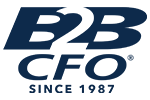
Smart Business Strategies for Tough Times
Posted on May 5, 2025 by Steven Tabor
Resilience in the Face of Tariffs and the threat of Recession.
Small and mid-sized businesses across the U.S. are feeling the strain of the new tariffs on imports from Canada, Mexico, China, and other countries on critical manufacturing components. While these tariff policies aim to boost domestic manufacturing and influence international relations, they are driving up costs for companies that rely on global supply chains. Whether you agree or disagree with the imposition of tariffs, this is the reality that each business owner faces today.
From rising input costs and supply chain disruptions to concerns over retaliatory tariffs, business owners are facing tough decisions—choices that could affect not just their operations, but American jobs and the broader economy. Even though they may not have any international customers, many small businesses that depend on imported components may be in a bind to compete with their competition. Companies with international customers may have both import and export problems because of reciprocal tariffs.
As B2B CFO® Partner, I understand the challenges you are facing with many uncertainties that lie ahead. How can you navigate increased costs to run your business and produce your products? Chances are that a recession is looming in the next 6 months, what can you do to “recession-proof” your business. What strategies can your business implement now to help you be prepared, have greater confidence and lead your business with knowledge, rather than fear.
Navigating Tariff Hikes
Let us take a closer look at how your company can smartly navigate potential tariff hikes with a 5-point assessment.
Tariffs can significantly impact product costs and influence where businesses source materials, affecting the prices both companies and consumers pay daily. For instance, when tariffs make raw materials unaffordable and unavailable in one country, businesses may need to find alternative suppliers in other countries. This can result in production delays and fewer products reaching customers. While the scenario is complex, understanding these dynamics prepares you to manage the ripple effects. Though the future may be uncertain, there are proactive steps businesses can take to stay prepared. Let us explore these key strategies:
1. Manage Pricing Impacts
Rising tariffs lead to higher costs for goods, materials, and components. Businesses face tough choices: absorb costs and risk smaller profit margins or raise prices and risk customer dissatisfaction. To respond effectively, evaluate your cost structure and determine how tariffs will affect pricing across products and services. What is your profit margin? How much can you raise your price to create a win-win scenario for both you and your customers? This will take some time to dive into your cost, pricing, margins and creating various pricing scenario models. It is important to be armed with this information now, rather than scrabbling and reactively adjusting your prices.
2. Communicate Price Adjustments
If you decide you need to increase prices on your products and services due to the high tariffs, transparency is critical when raising prices. Inform customers in advance, explaining how increased tariffs influence costs. Share specifics on affected products and offer examples. Use clear timelines to help customers plan while demonstrating empathy and offering support where needed.
3. Evaluate Supplier Reliability
Suppliers are the backbone of your operations, but disruptions happen. Assess their stability and maintain open communication. Collaborate with your team to forecast demand for the next 6-12 months and identify pivotal supplier relationships. Even during COVID times we learned that relying on a single supplier is risky, now is the perfect time to diversify and explore alternative options to ensure your business remains resilient and adaptable.
4. Strengthen Supplier Relationships
Fostering strong supplier partnerships can safeguard your supply chain. Focus on key suppliers—the top 20% that drive most of your operations. Build trust, collaborate on risk management, and develop contingency plans to navigate challenges together.
5. Diversify and Innovate
Minimize reliance on at-risk suppliers by exploring alternatives. Vertical integration can give you more control over resources, while product innovation can reduce dependency on specific materials or components. Diversifying supply chains ensures resilience during disruptions.
Planning for a Shaky Economy
In the wake of sweeping tariffs, discussions about a potential recession are gaining traction. Google searches for “recession” have surged, and leading economists are pointing to an increased likelihood of economic contraction within 6 months. Even though the latest Economic Report showed that GDP contracted by .3%, this contraction was mitigated by vendors and customers stocking up before the full effects of the tariffs kick in. The second quarter GDP contraction is projected to be a lot worse. A shrinking economy creates a chain reaction of challenges: rising unemployment, weakening stock market performance, and higher borrowing costs for both consumers and businesses.
Interest rates are projected to remain high since the Fed is committed to keep inflation as low as it can. As long as these tariffs are in effect, the inflation risk remains high. Also, it is impossible to change the Fed’s stance, since the entire Board of Governors is in total agreement. Of course, if the tariff policy is cancelled or reduced, there may be some rate reduction action by the Fed.
In times like these, the businesses that thrive are those that act proactively. No matter what your industry, recession-proofing your business should be a priority. Here are many strategies businesses should implement to prepare for turbulent times:
Strengthening Cash Flow and Build Reserves
In an economic downturn, cash flow becomes the heartbeat of your business—it is the difference between weathering the storm or falling prey to its uncertainties. Managing cash reserves effectively starts with a rigorous expense audit. Take the time to review each line item, identifying areas where costs can be cut without compromising quality or efficiency. Then, approach your vendors with confidence—renegotiating contracts can yield better terms or discounts, giving your bottom line some much-needed relief. Next, focus on collecting outstanding invoices to accelerate cash flow. Offering early payment incentives can encourage prompt responses from customers, while tightening credit terms helps minimize overdue payments that might otherwise strain your finances. Be diligent about building a financial cushion by establishing reserves that cover at least 3–6 months of operating expenses, providing a safety net to absorb unexpected disruptions and keep your business steady in uncertain times.
Diversify Revenue Streams
Relying on just one income source can leave your business vulnerable but exploring a few new avenues can really strengthen your foundation. For starters, think about expanding into new markets. Are there untapped regions or audience segments that align with what you are already offering? Consider adding complementary products or services that fit naturally with your core offerings could open some extra revenue opportunities. Think of it as giving your customers even more reasons to stick with you. Depending on your industry, you should explore recurring revenue models like subscriptions or memberships. These can provide steady, predictable income, even during market shifts.
Re-evaluate and Adapt Your Business Strategy
To stay ahead, plan for various scenarios—best, worst, and most likely—and develop contingency strategies for each. Consider how your business would respond to a 10%, 20%, or greater drop in revenue to ensure you are prepared for potential challenges. Simultaneously, keep a close watch on key metrics such as cash flow, profit margins, and market trends, enabling you to adapt swiftly to changes. Be ready to pivot, when necessary, whether that means refining your product offerings or transitioning to a leaner operational model.
Invest in Your Team
Your team is one of your most valuable assets in navigating economic challenges, and investing in their morale, productivity, and commitment is essential to your business’s resilience. Start by fostering transparent communication—keep employees informed about the state of the business and actively involve them in finding solutions to challenges. When your team feels empowered and connected to the mission and business goals, it strengthens trust and engagement. In cases where layoffs become unavoidable, approach the process with empathy and integrity to maintain morale and preserve goodwill.
Embrace Technology for Efficiency
To recession-proof your business, leveraging technology for efficiency can be a great move to save on expenses. Automation tools can streamline operations by reducing labor costs and taking over repetitive tasks, allowing your team to focus on higher-value activities. Advanced analytics offer deep insights into your business performance, enabling data-driven financial decisions and identifying opportunities to improve sales and revenue. Additionally, strengthening your digital presence through enhanced online marketing efforts increases visibility and attracts new customers—often with less expense than traditional methods. By embracing these technologies, you can drive efficiently, remain competitive, and build resilience in challenging economic times.
Seize Opportunities
Economic downturns shift the competitive landscape, allowing stable businesses to capture market share from weaker competitors by targeting new customers or entering overlooked markets. Innovation becomes crucial as customer needs evolve. It is the perfect time to streamline operations, improve products, and develop solutions that meet changing demands. Leaders who embrace adaptability can turn challenges into opportunities and emerge stronger when the economy recovers.
Leverage Expert Financial Guidance
Navigating a downturn demands sharp financial strategies, and leveraging expert guidance can make all the difference for a business owner steering through uncertainty. Engaging a strategic business advisor and fractional CFO provides access to data-driven insights and specialized recession planning expertise. These professionals can help uncover inefficiencies, streamline operations, and craft financial strategies that safeguard your company’s future. Additionally, exploring alternative financing options—such as low-interest credit lines or government-backed small business loans—ensures access to necessary funds without placing undue strain on your business. By partnering with the right experts, you can make informed decisions and position your organization for resilience and growth, even in challenging economic conditions.
A Final Thought
Recessions test resilience—but with a proactive mindset and strategic action, your business can not only survive but also come out on the other side stronger. Seek professional guidance to ensure you are making the best decisions for your company’s financial health, regardless of what the economy brings next. As a B2B CFO® Partner, I am here to help provide action plans, strategies, guidance, and peace of mind. If you wish to connect and share your business challenges, please send me an email at StevenTabor@b2bcfo.com


